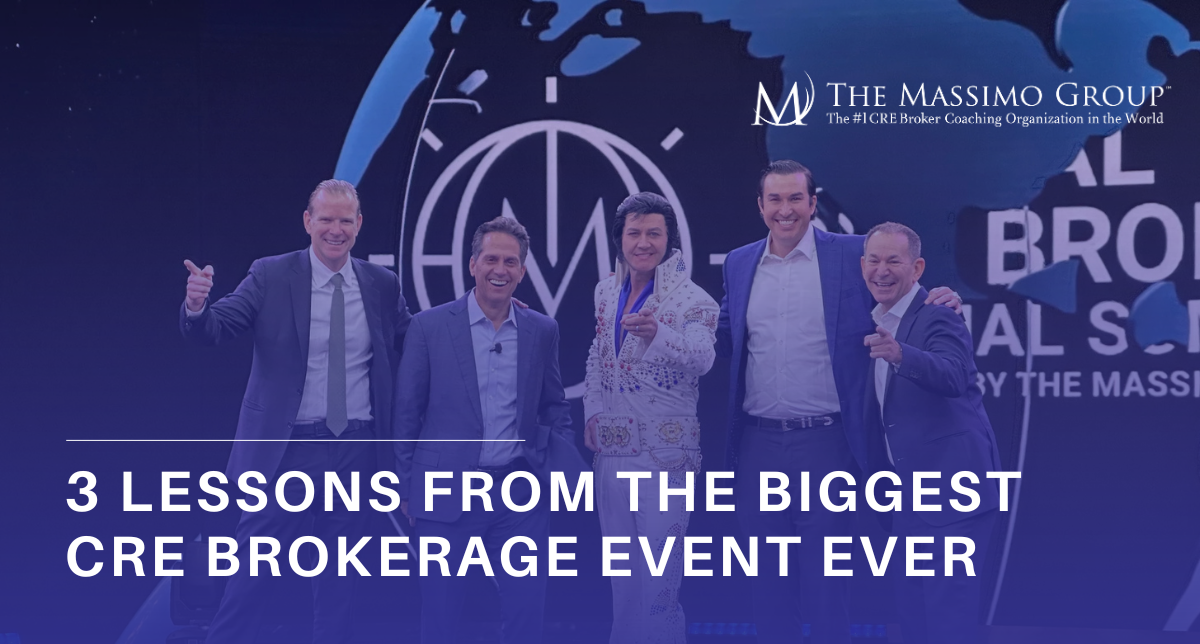There’s no doubt that CRE brokers need good sales and marketing strategies to close deals effectively with clients. Read on for nine tips to help you make the most out of your marketing budget.
In this article:
- Know the Difference Between Sales and Marketing
- Design a Customer Avatar or Business Persona
- Walk your Buyer Persona Through The Sales Pipeline
- Budget Not Only Money but Also Time
- Start with Niches in Your Sales and Marketing Strategy Plan
- Market and Prospect as Early as Possible
- Review Every Transaction to Get Patterns
- Perform a Gap Analysis for Sales Strategy
- Repeat Until the Process Becomes Your Habit
Sales and Marketing Strategies for New CRE Brokers
1. Know the Difference Between Sales and Marketing
There is a time for marketing and a time for sales, knowing the difference can help you thrive as a CRE broker.
Sales, in this context, means closing the deal; while marketing involves attracting clients and bringing your product (the commercial property) to their awareness and making it desirable.
A good CRE workflow starts with marketing, proceeds to prospecting, and ends with a sale. Understanding these steps will help your potential customers follow the appropriate customer journey.
Create an effective marketing plan to support your sales, and your strategy will have a good foundation.
2. Design a Customer Avatar or Buyer Persona

What is a customer avatar? A summary of your ideal customer that can be used to understand potential prospects, how they think and make decisions. Customer avatars often describe traits, beliefs, and behavior.
What is a buyer persona? Similar to a customer avatar, the buyer persona is a fictional character that represents your potential prospects, based on data from surveys and focus groups.
Each persona has unique characteristics and needs, and a good CRE broker will know how to convert the persona to a prospect.
A Buyer Persona Survey shows that buyers are 48% more conducive to marketing campaigns that have customer avatars. In fact, around 3 to 4 Buyer Personas capture 90% of sales for some companies and agencies, like Business Grow.
If you lack a customer avatar or buyer persona, then start here: How to Identify Your Buyer Persona.
3. Walk your Buyer Persona Through the Sales Pipeline
You have your foundations, now let’s see how they pan out.
Consider how your buyer persona fit into your sales pipeline. What will you do to get the lead? What marketing tactics will you apply that appeal to them? What course of action will you take to make the sale?
While data is important, new CRE brokers may not have access to a lot of data so predicting how a persona moves can substitute for the shortage of data. Predicting the reaction of your prospect can make conversions easier.
Understanding your process, persona, and pipeline will help you strategize as you follow each of the steps in your business.
4. Budget Not Only Money but Also Time

Capital is the fuel for all business operations. Due to the necessity of capital, a working CRE strategy must have a budget.
However, capital shouldn’t just be considered in terms of dollars. The right budget also plans out the man-hours and network a CRE broker uses.
Time management improves the whole business process and should always have a part in any business plan. Sales and marketing strategies can benefit from time management strategies.
An important detail a lot of CRE brokers forgo, whether new or experienced, is the proper timing of marketing and prospecting.
Lastly, a marketing budget can really help get more leads. Whether you market through social media, traditional advertisements or cold call contact lists, shelling out some cash makes the acquisition of data easier and more efficient.
5. Start with Niches in Your Sales and Marketing Strategy Plan
Focus cuts clutter and reaches your prospects. By narrowing down to a niche, CRE brokers, even the new ones, find quality leads that cost less time and effort to convert.
Prospects prefer specialists over generalists, and mastering one niche can enable CRE brokers to develop a deeper understanding of the business.
RELATED: 11 Holiday Marketing Ideas For Your Commercial Real Estate Business
6. Market and Prospect as Early as Possible

Like people, a strategy grows and changes. In order to make the right changes, a CRE broker should get data and experience by starting early.
If you already have records of sales but no records of how marketing and sales proceeded, you can ask for feedback from previous clients.
How do you prospect early? By qualifying your leads.
For example, applying NUCLEAR prospecting gives your marketing a prospecting edge, even before the lead moves from the marketing phase to the prospecting phase.
7. Review Every Transaction to Get Patterns
Strategy, when purely speculative, may be too abstract and ineffective. That is why it is important to review every sale and marketing campaign.
Transactions do not only mean closed sales. They also include failed proposals and any prospect or lead interaction.
A broker should analyze data to see if there are any areas that can benefit from optimization. This can include anything from the time of interaction to frequency and intensity of marketing.
With the analysis of transactions, a CRE broker can identify patterns and create benchmarks to apply necessary updates, as well as goals or benchmarks. These benchmarks are important for the next phase.
8. Perform a Gap Analysis for Sales Strategy

What is gap analysis? A review of why goals are not reached and how to close the gap between reality and ideals.
In fact, your sales and marketing strategy may by itself be a gap analysis. Remember the benchmarks mentioned above? Those goalposts can serve as the numbers to reach.
For example, your data shows that while you have 300 outbound calls for prospects each month, you only convert 1%. Your goal could be to increase the conversion to 2% to double your conversion.
Once you have formulated your goal and have found the gaps, planning how you’ll eliminate those gaps is sure to improve your success as a CRE broker.
9. Repeat Until the Process Becomes Your Habit
As mentioned before, the CRE sales and marketing strategy is meant to evolve with every broker or agency. Every transaction should enrich the team with sales and data.
A yearly review is not enough time to make the process a habit. A psychology study shows that forming habits usually takes around 66 days. Some go beyond, some develop habits sooner.
Constant repetition can make a conscious action a subconscious one, so the sooner you practice these sales and marketing strategies, the sooner you form great habits.
Planning your sales and marketing strategy is not just a yearly activity. Committing to a strategy does not only mean implementing it but also changing it when the market changes and grows.
These 9 techniques can provide a good CRE framework but, as you know, plans by themselves do not bring success. A course of action needs to be taken to make things work.
Start applying these sales and marketing tips to improve your workflow
Do you have trouble finding and dedicating time to prospect? In this free webinar session, Massimo Group COO Bo Barron will share with you the 4 tactics used by Top Producers to find and protect time for prospecting! You can watch it by clicking here.
Up Next: Best Approaches to Marketing Yourself as a Commercial Real Estate Broker



